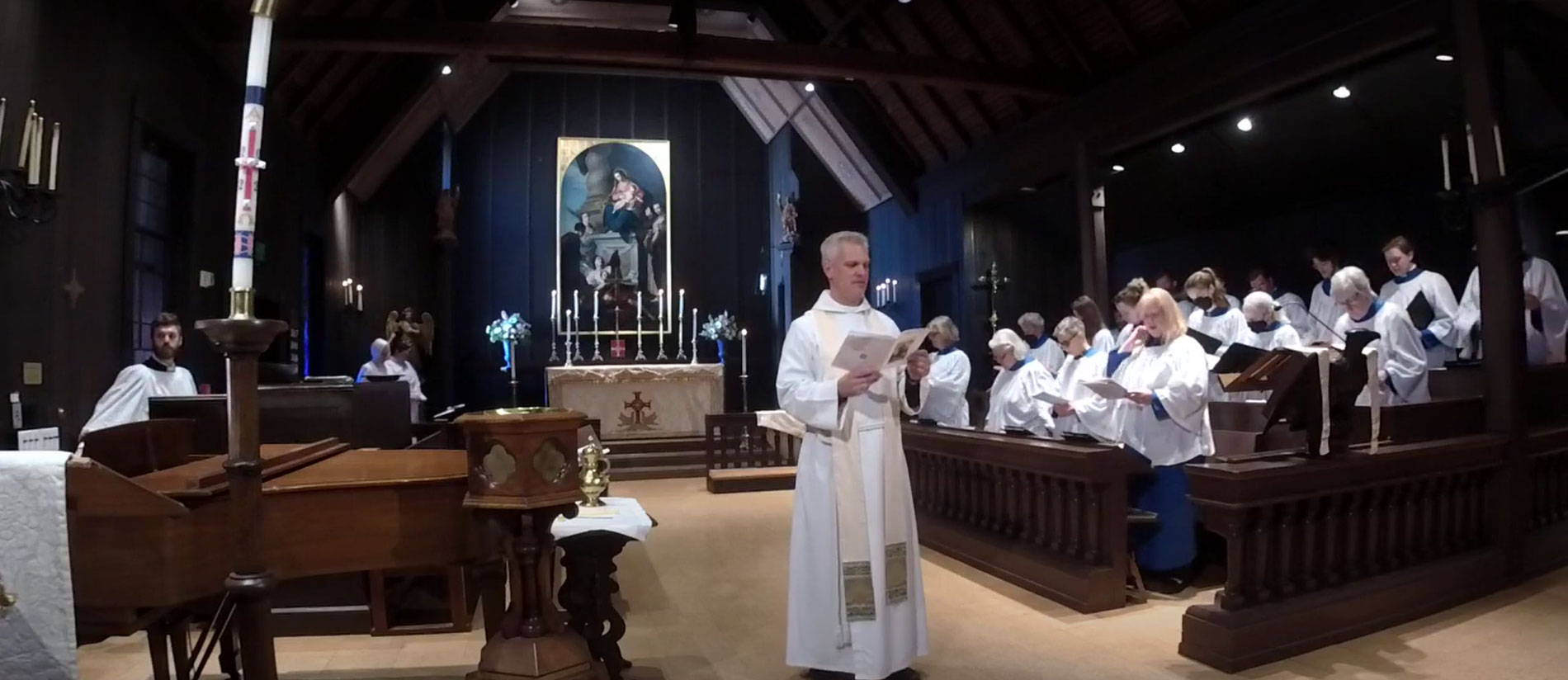History of Our Church
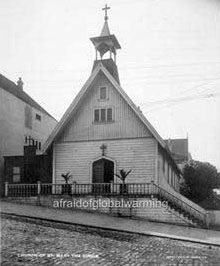
In August 1888, Miss Florence Gay began a Sunday School for five children in a home in San Francisco’s Cow Hollow district, then a pasture where dairy cows grazed lazily among the chaparral. As the school grew, Episcopal clergy began to visit, to instruct and to baptize the children. Soon the expanding effort came under the care of St. Luke’s Church, which sent the Rev. William Bolton, in March 1890, to take charge of the new mission possibility developing in this expanding part of town.
With 54 families and 75 Sunday School children, the new congregation had, by December 1890, moved from a home to a vacant grocery store, to a political meeting hall (called the Republican Wigwam) and raised $1500 toward building a church. In April 1891, St. Mary the Virgin became the ninth parish of the Episcopal Church in San Francisco. Father Bolton persuaded Frank Pixley, publisher and editor of the Argonaut, a nationally known newspaper and owner of considerable property in Cow Hollow, to donate a corner lot for the church building. Frank and his wife Amelia also donated the altar painting, a copy of “Asunto Mistico” by G. Cignaroli. The first services in our present church were held on October 4, 1891. An English expatriate, Father Bolton launched a firmly “high church” Anglo-Catholic parish. As the San Francisco Chronicle described it: “the ceremonials will be exceedingly elaborate of the most ritualistic order ever seen in California.”
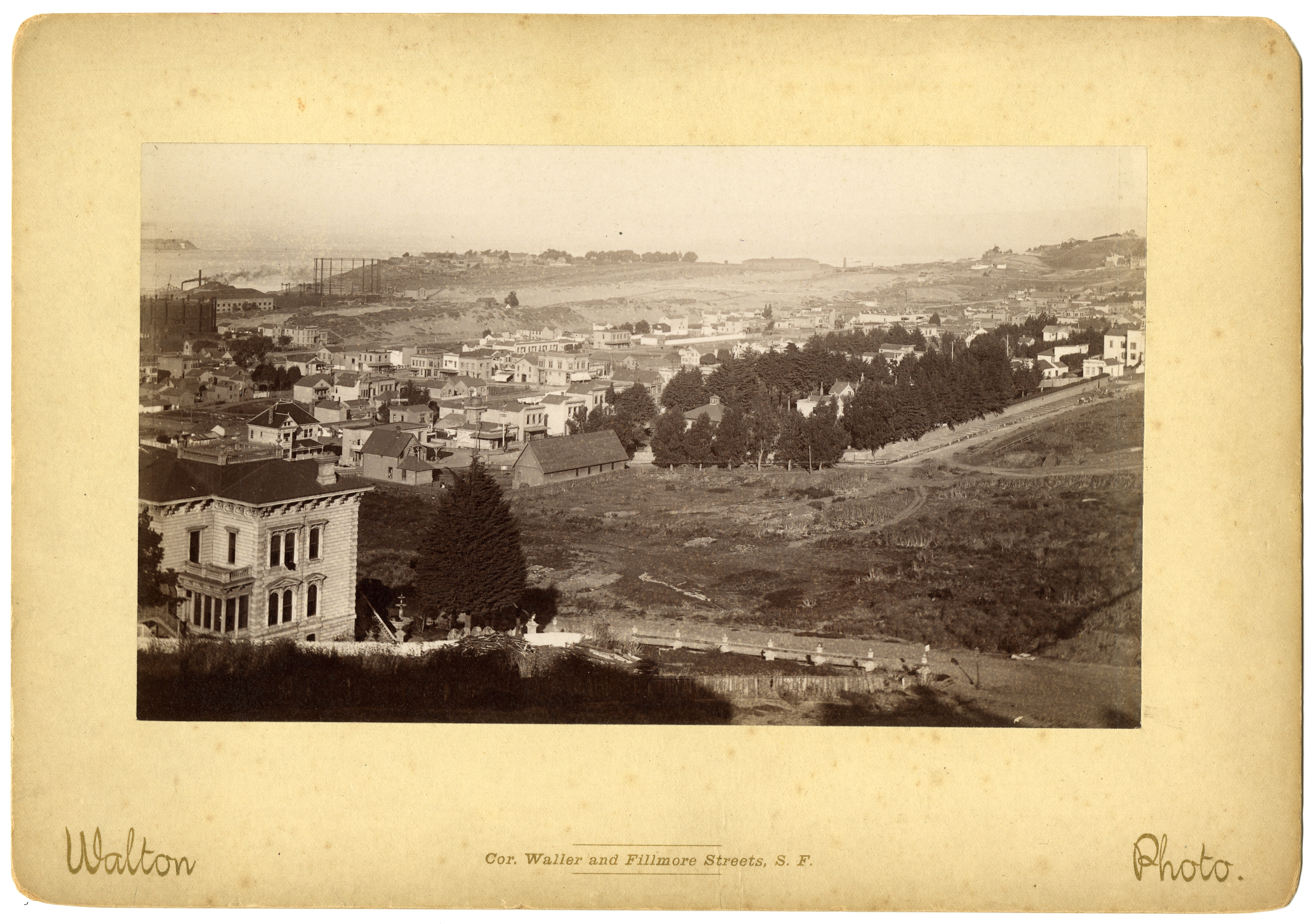
The view circa 1893 from Vallejo and Scott Streets toward Fort Mason. The Italianate Victorian in the lower left foreground is the Casebolt House, still standing on Pierce Street. The Church of St. Mary the Virgin is at the corner of Union and Steiner Streets. The Pixley estate occupies the entire wooded block bounded by Green, Steiner, Union and Fillmore Streets. The roof of the Pixley mansion is just visible, surrounded by trees.
Our history is full of ups and downs. We survived the 1906 earthquake and fire very well (Look for our picture in “Denial of Disaster.” a book about the 1906 earthquake published in 1989). We almost did not survive two decades of failed leadership when rector after rector stayed less than a year and membership dwindled while the neighborhood was growing. We lost parish status and became a mission of the diocese in 1918. A turning point came in the early 1920s when Amelia Pixley’s heirs issued a new deed, lifting her restrictions for “high church” ceremonies only. With a change in style of worship to “broad church,” St. Mary’s began to attract neighbors who started to attend. As the style of worship changed, we got back on our ministerial and financial feet. Resurrection ensued. By 1940 we were a parish again.
A great deal of change came with the Rev. Keppel Hill, who was rector from 1948 to 1966. The church’s interior was reversed, placing the altar at the Steiner Street end, and the entrance off Union Street in the newly-created courtyard. The south (chapel) section was added, with the offices above it. Also, the house on Steiner Street next to the church was purchased and named Pixley House. The fresco mural scenes in the courtyard from the life of St. Mary were inspired by a dream of Fr. Hill’s, and created by artists Lucienne Bloch and Stephen Dimitroff in 1966.
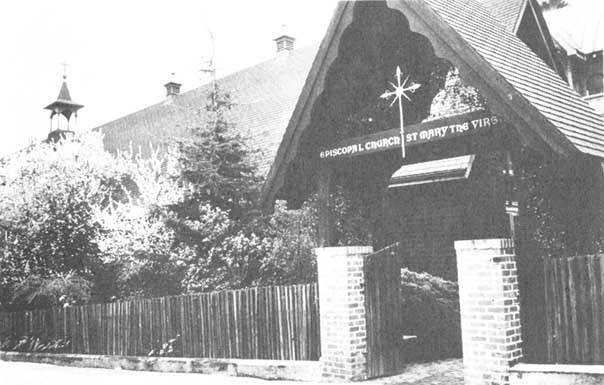 View with entrance on Union Street with Lych Gate
View with entrance on Union Street with Lych Gate
The Rev. Richard Fowler came to St. Mary’s in 1966 and retired in January 1999. During his almost 33 years, the parish flourished. Membership, outreach programs, worship services, and the buildings all expanded. In the church, the altar was moved away from the wall so the Eucharist could be celebrated facing the congregation; the 1979 Prayer Book was promptly introduced and later the 1982 Hymnal. Three Sunday morning services were expanded to include a fourth, innovative worship service on Sunday afternoon. Three choirs: children’s, youth, and adult formed the foundation for a music ministry augmented by a concert series.
Lay ministry thrived with preaching, healing ministers, and sacraments taken to the home-bound. We initiated equal ministerial opportunities for women, both lay and ordained. The parish sponsored many men and women for ordination. We demonstrated a deep commitment to outreach, acting as primary contributors of time and money to create the Episcopal Sanctuary for the Homeless, and founding the ecumenical Ministry to Nursing Homes, among other efforts. An active Youth Group started ministry to the children of the parish following their confirmation. The Sunday School, with a curriculum tailored to offer lessons from preschool to confirmation, drew many new families. Its popularity served as one reason for a major expansion of the premises, harking back to the days of Miss Gay’s Sunday School when the children originally led the parish into being. In 1997 we moved out of our buildings for nine months, for a thorough renovation of the Parish Hall, renamed Fowler Hall, and Pixley House. At the same time, improvements were made to the church. With the completion of our reconstruction, we were able to expand our ministries and programs. Fowler Hall’s remodeled space allowed us to house several day programs for children. We also were able to welcome back five Alcoholics Anonymous groups which had started meeting at St. Mary’s in the 1970’s.
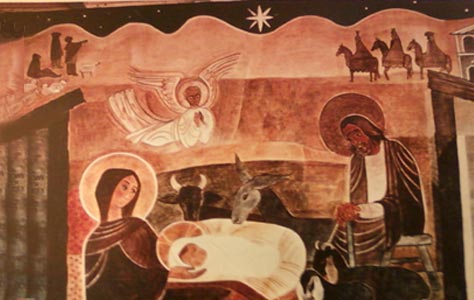 Nativity Scene as part of St. Mary’s Mural
Nativity Scene as part of St. Mary’s Mural
A new era began for our Cow Hollow church in the year 2000 when the Rev. Dr. Jason Parkin was called as Rector. Father Parkin brought new energy and vision to the parish and enhanced the strong tradition of lay leadership that had seen us through the interim period of the rector’s search. His liturgical, homiletic and musical skills greatly enriched our worship at St. Mary’s. The addition of the five members of the Parkin family to our parish community underscored the traditional role of St. Mary the Virgin as a family-oriented church. Plans were set in motion to fund the purchase and renovation of a permanent Rectory to accommodate the family.
After Jason arrived, the interim appointment of The Rev. Beth Hansen as Associate Rector was made permanent with a special focus on pastoral care and counseling. Those areas were further strengthened by the calling of our first Deacon, newly-ordained Deacon Everett Powell, a parishioner of St. Mary’s. Several years later, another newly-ordained St. Mary’s Deacon, Nancy Bryan, joined Everett in her home parish.
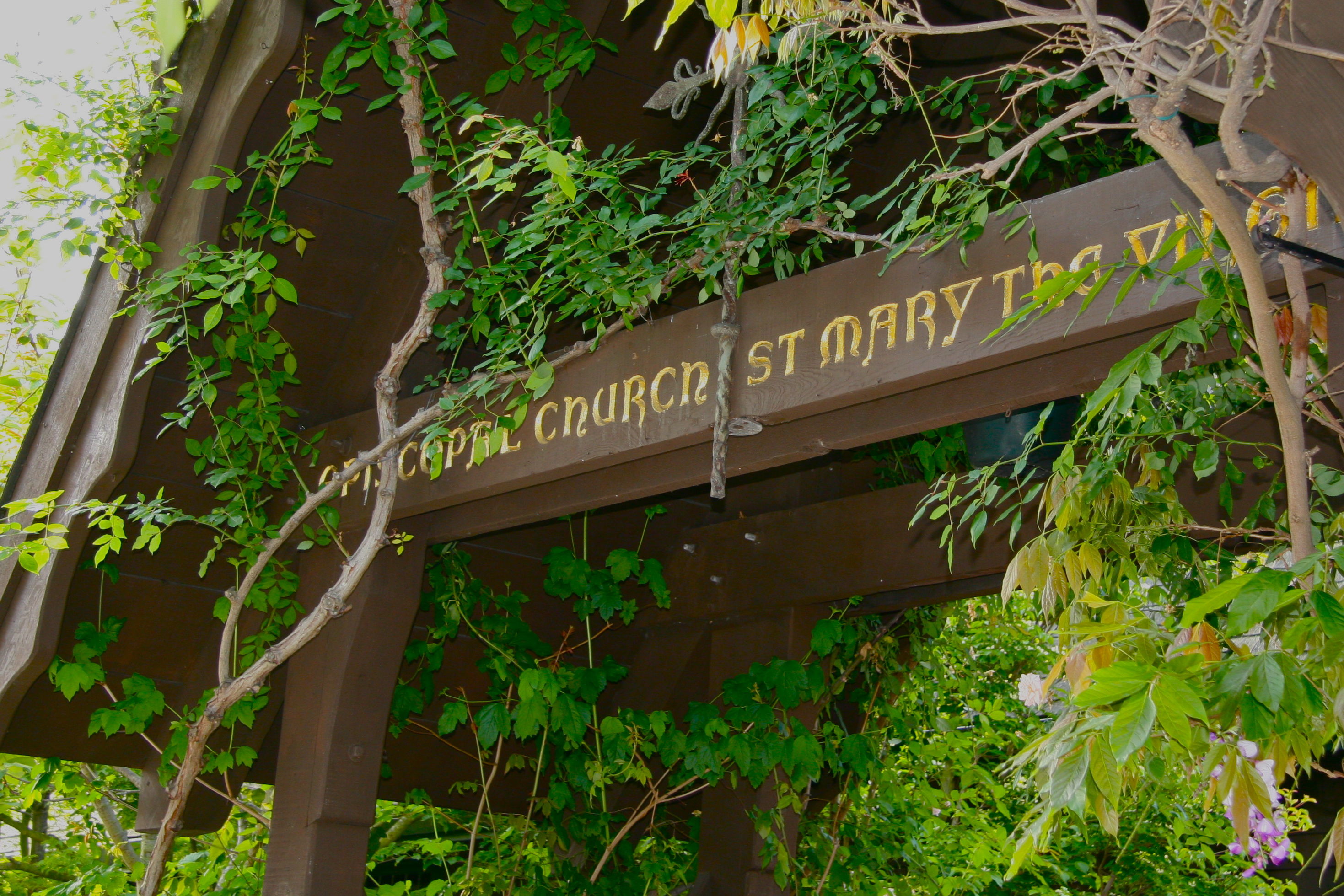 St. Mary’s Lych Gate today
St. Mary’s Lych Gate today
St. Mary’s continued to play an important role in the outreach activities in the Diocese of California. Notably, parishioners provided leadership in establishing the Canon Barcus Community House – named after the late Associate Rector of St. Mary’s who led the early diocesan efforts to house the homeless. The Canon Barcus Community House provides housing and services for forty-eight homeless families in San Francisco. In 2001, Bishop William E. Swing recognized the contributions of St. Mary’s by naming us the “Parish of the Year.”
In 2004, the church staff was augmented by the addition of two part-time posts, a Youth Group Leader and a Nursery Coordinator, and the parish was able to retire its remaining debt. The following year, a special Search Committee was established to find a new priest to preside at the Sunday afternoon Unplugged service and provide support for the parish’s outreach services.The Rev. Jennifer Hornbeck was called, and the addition of the responsibility for the Youth Ministry transformed the position to a full-time commitment. Jennifer was made Associate Rector and the Rev. Beth Hansen became the Senior Associate Rector.
After two years of work by a devoted planning committee, the St. Mary’s Columbarium was dedicated in 2007, and it marked the completion of the Mary Meditation Garden. The small garden behind the church provides parishioners and visitors with a tranquil refuge with a statue of Mary and her child and a bench on which to meditate or pray.
The year 2009 was marked by the retirement of Michael Secour (Organist and Choirmaster) and Catherine Secour (Children’s Choir Director) after more than three decades of devoted service to St. Mary the Virgin. We were fortunate to be able to call Chip Grant as our Director of Music, and Steve Repasky as our Associate Director of Music, Organist and Youth Choir Director. A new Children’s Choir Director was selected. A Handbell Choir was formed and gave a number of performances in the church. In addition to a rich program of music offerings at the 9:00, 11:00 and 5:30 Eucharists, St. Mary’s music ministry includes a series of Candlelight Concerts and a variety of other special performances during the autumn, winter and spring. Today, Director of Music Eric Choate and Music Associate Marla Perkins continue stewardship of music at St. Mary's, building upon the work of those who have laid the foundation for a vital music ministry.
In 2012, the parish called the Rev. Scott E. Richardson to be our Rector. He served through the end of 2015. The Episcopal Church of St. Mary the Virgin continued to grow in God’s grace under the leadership of our vestry and interim clergy until August 2017 when the Rev. David Erickson answered the vestry’s call to become the current rector of our parish.
